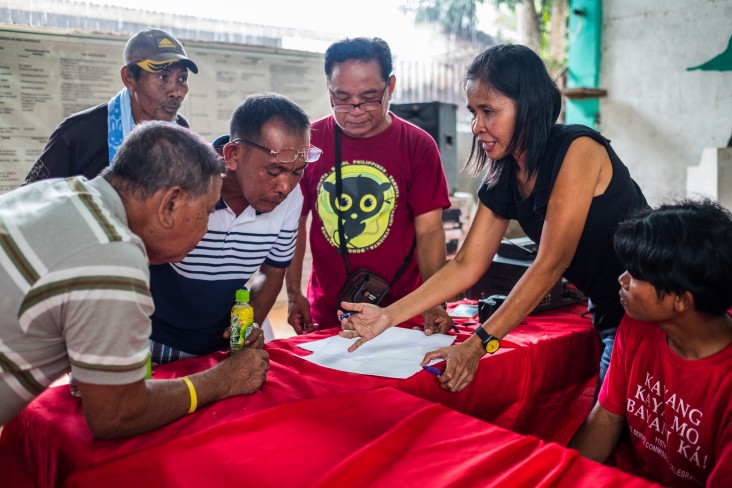Speeches Shim

USAID is committed to ensuring every American tax dollar we spend advances our national security and achieves real results around the world. USAID cares about the effectiveness of its programs and over the years, we have been grappling with the question of how to understand the effects of our programming. We have even created multiple tools to understand whether our programs are accomplishing the expected results and feed that knowledge into decisions about designing a new project, adapting an existing one or considering stopping a program that is not working.
So How Does USAID Ensure its Foreign Aid is Effective?
In order to improve program performance and support countries on their journey to self-reliance, USAID uses the Program Cycle. The Program Cycle is a common set of planning, implementation and learning processes intended to ensure USAID programs are effective and informed by evidence. It can be thought of as the backbone of programs. And, as part of this effort, USAID will be elevating its evaluation function through its proposed Bureau for Policy, Resources and Performance, which will align policy, resources and evidence-based programming, while serving as a strong Interagency interlocutor. Evaluation will play a key role in helping understand how best to help partner countries achieve self-reliance.
Core Tools for Program Effectiveness
As part of its Program Cycle policy, USAID requires that evidence inform choices in country strategies, and to underpin project and activity design. Then during implementation, USAID uses several approaches to monitor performance, evaluate and learn to improve effectiveness:
- Ongoing monitoring of all activities to track progress towards key results and determine if an activity or project is on track and course correct as necessary.
- Performance evaluations are required at some level for each project.
- Impact evaluations are required, if feasible, of any new, untested approach that is anticipated to be expanded in scale or scope (i.e., a pilot intervention).
- A set of approaches outlined in the Collaborating, Learning and Adapting Toolkit to ensure that USAID staff and partners can analyze learning from implementation and manage adaptively.
Innovative Tools for Program Performance, Learning and Adapting
In addition to standard approaches to monitoring and evaluation, USAID continually strives to improve our understanding of the effectiveness of programs as well as long-term effects. There are several efforts throughout the agency to find innovative ways to monitor and evaluate USAID programs. USAID assesses these tools together to understand which ones are best suited for different types of programs and different types of questions.
Pilots and promising approaches include:
- cash benchmarking
- complexity-aware monitoring
- Monitoring, Evaluation, Research and Learning Innovations Program (MERLIN)
- developmental evaluation
- organizational performance index measurement tool
- and a variety of impact evaluation methods to measure change in outcomes from USAID programs.
Blogs:
- Ensuring Effective Development
- What USAID is Doing to Learn from Evidence
- U.S. Push to Make Development Aid More Effective is Paying Off, Says OECD
Evidence for Effectiveness

USAID is a leader among federal agencies in monitoring and evaluation and is consistently ranked at the top among agencies scored by Results For America’s What Works Index. As part of this long tradition, the Agency has undertaken a number of studies related to the effectiveness and impact of its programs. While the Development Experience Clearinghouse contains a more complete repository, several of interest are highlighted below:
For an overview of USAID's approach to using evidence to strengthen development programming: Five Years of Better Evaluation Practice
Agriculture and Food Security
- Green Revolution
- Feed the Future Progress Snapshot
- Synthesis of Evaluations related to the Feed the Future Learning Agenda
Democracy, Human Rights and Governance
- Effects of U.S. Foreign Assistance on Democracy Building - 2018 study
- Russia: Golos Impact Evaluation - Final report
- Cambodia: Democracy and Governance Impact Evaluation Report
- Other technical publications on Democracy, Human Rights and Governance
Conflict, Peace and Violence Prevention
- Central America: Impact Evaluation of USAID’s Community-Based Crime and Violence Prevention Approach in Central America: Regional Report for El Salvador, Guatemala, Honduras and Panama
- Philippines: Mindanao Programs Evaluation - Impacts on Conflict and Peace since 2000
- Chad and Niger: Impact Evaluation of Peace through Development II Radio Programming
- Zimbabwe: Impact Evaluation of Supporting Traditional Leaders and Local Structure to Mitigate Community-Level Conflict
- Afghanistan and Colombia: Measuring Impact of Stabilization Initiatives
Economic Growth, Education and Environment
- Sectoral Synthesis of 2013 - 2014 Evaluation Findings
- USAID Education Strategy Progress Report, 2011 - 2017
- Synthesis of Findings and Lessons Learned from USAID-Funded Evaluations, Education Sector, 2013 - 2016
Global Health
A recent independent study found that 71 percent of USAID evaluations have been used to modify and/or design USAID projects.
Download the USAID Makes an Impact palm card

Comment
Make a general inquiry or suggest an improvement.